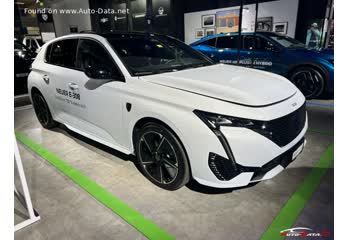Everything you need to know about specifications and performance - Peugeot 308 2017 - GTi 1.6 THP (270 Hp)

Overview:
What is the engine capacity of a Peugeot 308 2017?
The engine capacity of the Peugeot 308 2017 is 1598.
Peugeot 308 2017 How many horsepower?
The engine power of the Peugeot 308 2017 is 270 Hp @ 6000 rpm..
What is the Peugeot 308 2017 engine?
Peugeot 308 2017 engine is EP6FDTR. (Click to see other cars using the same engine)
How much gasoline does a Peugeot 308 2017 consume?
The Peugeot 308 2017 consumes 6 liters of gasoline per 100 km
What is the recommended oil for a Peugeot 308 2017 engine?
The recommended oil for a Peugeot 308 2017 car engine is 0W-30.
What type of camshaft transmission system is used in a Peugeot 308 2017 engine?
chain is used to transmit motion.
General:
Engine:
Performance:
Space:
dimensions:
Powertrain, Suspension and Brakes:
See also

Last generation.
Its production began in 2023 until 2025

Other generation.
Its production began in 2010 until 2011

Same production year and almost the same engine capacity.
Its production began in 2017 until Now

Same production year and almost the same engine capacity.
Its production began in 2017 until Now

Write a comment